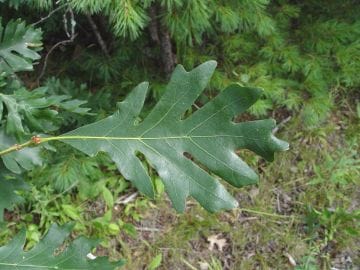
Link to the full source article
RSS feed source: National Science Foundation
Credit: Donald Cameron
Leaves of the white oak (Quercus alba) U.S. National Science Foundation-funded researchers at Indiana University and Penn State have collaborated with scientists from the U.S. Forest Service and others to produce the first complete genome for the white oak (Quercus alba). This tree provides large amounts of timber and is the primary species used in barrels for aging spirits.
Data to complete the genome came from a range of academic sources, such as the Forest Service, state forests and industry. By combining those data into an unbiased annotation of the white oak’s genes, the researchers have created a resource to understand genetic diversity and population differentiation within the species, assess disease resistance and the evolution of genes that enhance it, and compare with other oak genomes to determine evolutionary relationships between species and how the genomes have evolved.
“Plants, including trees, help meet society’s needs for food, fuel, fiber and, in this case, other key economic services. Having genomic data like this helps us address important biological questions, including those related to the economic and societal use of the species,” said Diane Jofuku Okamuro, a program officer in the NSF Directorate for Biological Sciences.
The research included the use of the NSF-supported CAGEE (computational analysis of gene expression evolution) software. The
Click this link to continue reading the article on the source website.